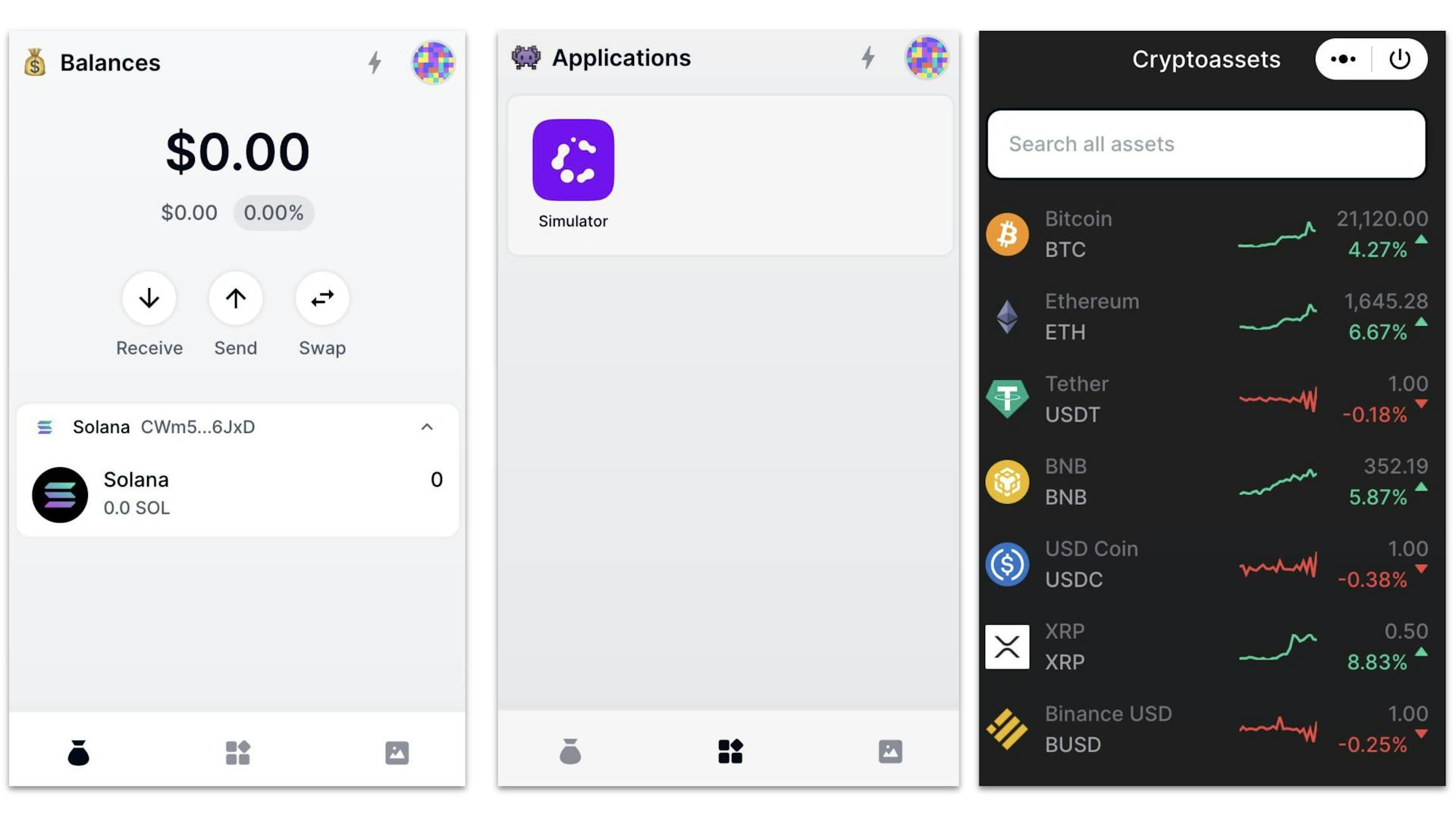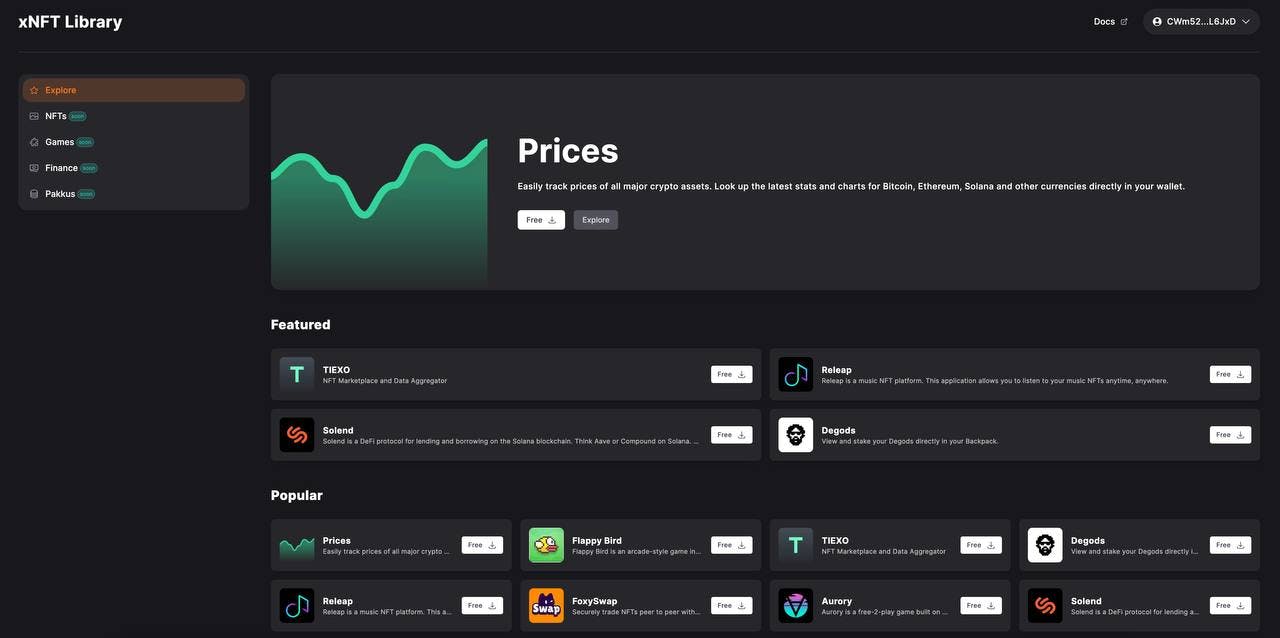
What is an xNFT (Executable NFT)?
Written by Adesoye Jeremiah Olayinka
As the second most-used blockchain, Solana has widespread adoption of its DeFi applications and NFT marketplaces. With the network’s low fees and an average throughput of roughly 3,000 transactions per second, blockchain users have undoubtedly been drawn to what Solana developers have created.
Now, developers at Coral have created a cutting edge application on the Solana blockchain called xNFTs. This article will explore traditional Solana NFTs, xNFTs, their differences, their applications, and relationship to Backpack and the Solana Mobile Stack (SMS).
What are xNFTs?
An xNFT is a new token standard built on the Solana blockchain that is executable tokenized code representing ownership rights over its use. What this means is that an xNFT can itself be a platform for operable web3 applications.
Additionally, xNFTs are applications built directly into the digital assets that they represent. With xNFTs, you do not have to link your wallet to any website. This means that users aren’t obligated to depend on any third-party software to use and access their assets.
The new xNFT framework is a game-changer for Solana, which will provide the network and platform for this exciting use-case.
The Difference Between xNFTs and NFTs
xNFTs inherit most of the qualities of standard non-fungible tokens, but with additional internal features and capabilities. An xNFT takes the NFT protocol and, instead of only containing an asset, it also contains code. This allows for native web3 applications and protocols to run inside of a single wallet.
Traditional NFTs (non-fungible tokens) are assets created on a blockchain with unique metadata meant to differentiate one digital asset from another. Solana NFTs can be bought, sold, traded, and their ownership is governed by a smart contract that cannot be duplicated.
For example, let’s say you want to stake your DeGods NFT in exchange for some token or other incentive. To do so, you must first connect the crypto wallet holding that NFT to a third-party website where you will stake it. This creates a security vector.
In contrast, an xNFT does not require you to log in to any external platform to stake your asset; an xNFT allows you to use the asset any way you like within the application itself. An xNFT does all of this with a service called Backpack.
What is Backpack?
Backpack is a new Solana wallet and application management platform built for xNFTs. Backpack can be understood as an operating system for all xNFTs developed on-chain because it manages your private keys and grants holders access to decentralized applications.
Similar to smartphones which can access applications through an app store, Backpack is an alternative infrastructure for housing xNFTs and any dapps built in it.
The xNFT standard enables any dapp built on Solana to create an xNFT and be executed natively inside the backpack wallet. And because NFTs aren’t the only kind of crypto asset, Backpack acts as an interface for everything from your Mango Market account to your marketplace listings and price tracker.

What is the Solana Mobile Stack?
The Solana Mobile Stack, or SMS, is an open-source software development kit (SDK) that gives a developer tools for creating applications on Solana's upcoming mobile phone. The Solana Mobile Stack allows software developers to build native Android web3 applications on top of the Solana blockchain.
Solana Co-founder, Anatoly Yakovenko, said, “We live our lives on our mobile devices – except for Web3 because there hasn’t been a mobile-centric approach to private key management. The Solana Mobile Stack shows a new path forward on Solana that is open source, secure, optimized for web3, and easy to use.”
Solana Mobile Stack includes protocols for connecting native mobile applications to a crypto wallet on a mobile device, a siloed security layer for abstracting and storing a user’s private keys, and a decentralized payment service known as Solana Pay for Android.
Most importantly, Solana Mobile Stack gives devs the tools to make Backpack and xNFTs available on mobile devices without compromising the core features offered by Solana’s blockchain.
Applications of xNFTs
Building a dapp for an xNFT is just like building directly on the blockchain, except you render the dapp inside of the Backpack wallet. There are as many possible use cases for xNFTs as there are for dapps built directly on the blockchain. The following are some examples of how xNFTs can be used:
1. In-Wallet Trading Platform
On-chain trading systems can be built as xNFTs applications. For example, Mango Markets, a DeFi platform on Solana, launched an xNFT, a Backpack user can access their trading account and manage their positions on Mango Market, all from the Mango Market xNFT inside the Backpack wallet.
2. Web3 Social Media
One of the most popular NFT communities on Solana, Degenerate Ape Academy (DAA), developed a project called the "Degeniverse". The Degeniverse is a metaverse community channel for facilitating meetups and communication among holders of DAA NFTs. With xNFTs, users can communicate with members inside their backpack wallet.

What is Coral Community?
The Coral Community is led by Armani Ferrante, a former software engineer at Alameda Research, and Tristan Yver, the head of strategy for FTX, one of the most popular cryptocurrency exchanges in the world.
Coral Community is responsible for Anchor, an open source framework for developing Solana progams in Rust (which inspired Seahorse, a pythonic Solana development framework), and Anchor Registry, a database of verifiable Solana program code.
Anchor is the most widely used framework built for the Solana Sealevel Runtime to make app development convenient for Solana developers. Now the Coral team is actively building xNFTs, Backpack, and CoralOS. The official documentation for building xNFTs with a developer framework based on React has just been released.
With backing from many of the most prominent crypto organizations such as FTX, Jump Trading, and Serum, Coral Community have access to resources available to help in building an ecosystem of products, protocols and primitives for Solana's ecosystem.
Start Building In-Wallet Solana Dapps with xNFTs
Innovative products like xNFTs and Backpack will introduce the web3 ecosystem to a more user-centered product experience while offering software developers a fully-customizable application platform. With the timely launch of the Solana Mobile Stack, Backpack is able to leverage core Android functionality to house mobile-friendly xNFT-based web3 applications.
Though xNFTs are not yet publicly available, Coral recently raised $20 million to support the release of their flagship product, Backpack.

Related overviews
Compare 13 top Solana wallets 2025. Secure SOL storage for DeFi, NFTs & staking. Hardware, mobile & browser.
Explore the best Solana RPC node providers on the market.
Everything You Need to Know About Developing Native Smart Contracts on Solana

Build blockchain magic
Alchemy combines the most powerful web3 developer products and tools with resources, community and legendary support.